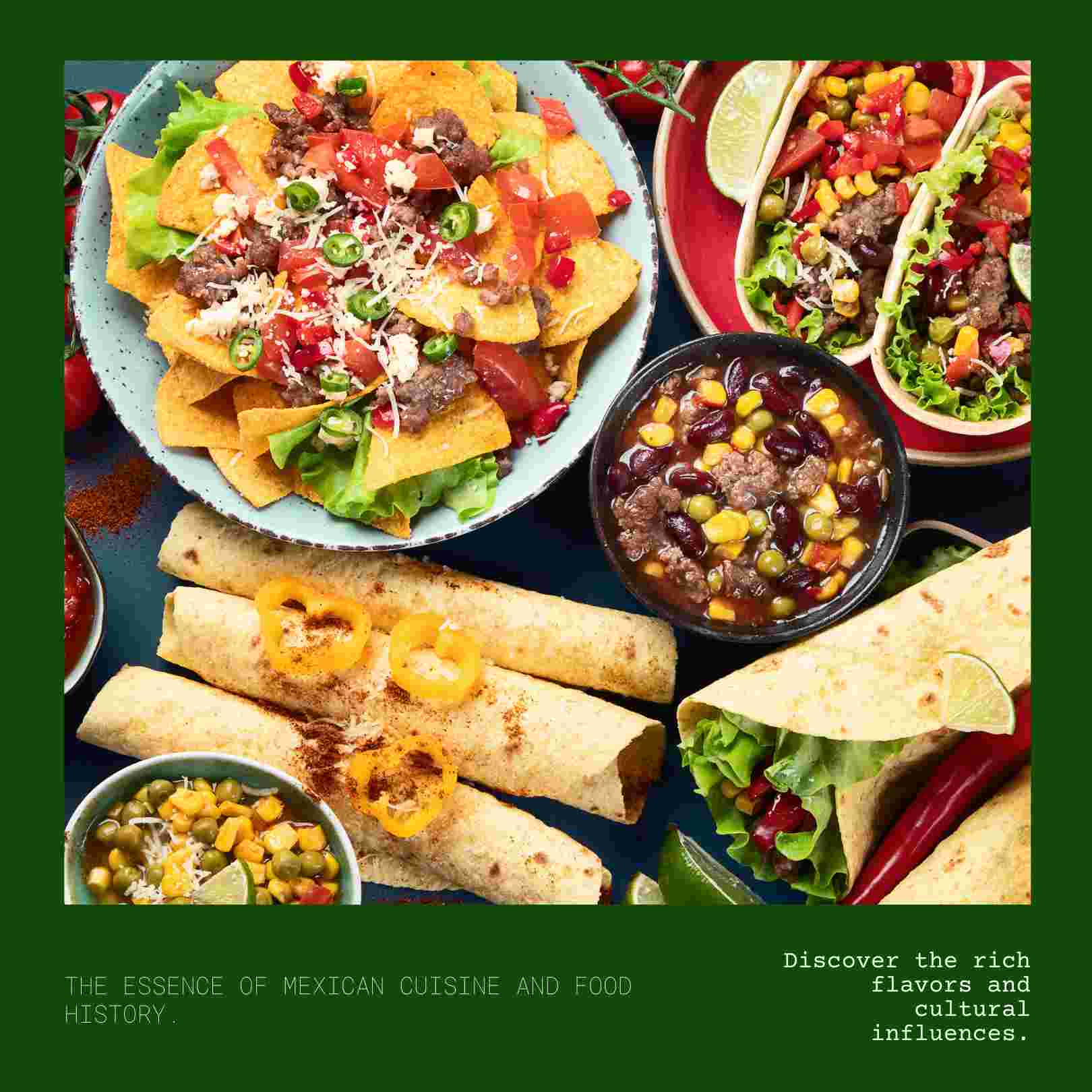
The Essence of Mexican Cuisine and Food History
Hola, amigos! Ivan here, soaking in the colors, sounds and aromas of my beloved Mexico. Come along with me as we are exploring the depths of Mexican cuisine and embark on a culinary adventure. It’s not just about food, it’s a journey through time, a celebration of history, tradition, and the irresistible flavors that make Mexican cuisine a true marvel.
In the heart of Mexico, where every street corner tells a story, I find myself constantly enchanted by the diverse and soulful essence of our culinary heritage. This isn’t just a journey for the taste buds, it’s a connection to the roots that run deep, a celebration of the vibrant tapestry that weaves through the history of Mexican food.
So, buckle up, my friends, as we navigate the streets filled with the sizzle of taco stands, the aroma of spices, and the warmth of abuelita’s kitchen. Together, let’s uncover the secrets, the stories, and the pure magic that is Mexican cuisine. ¡Vámonos!
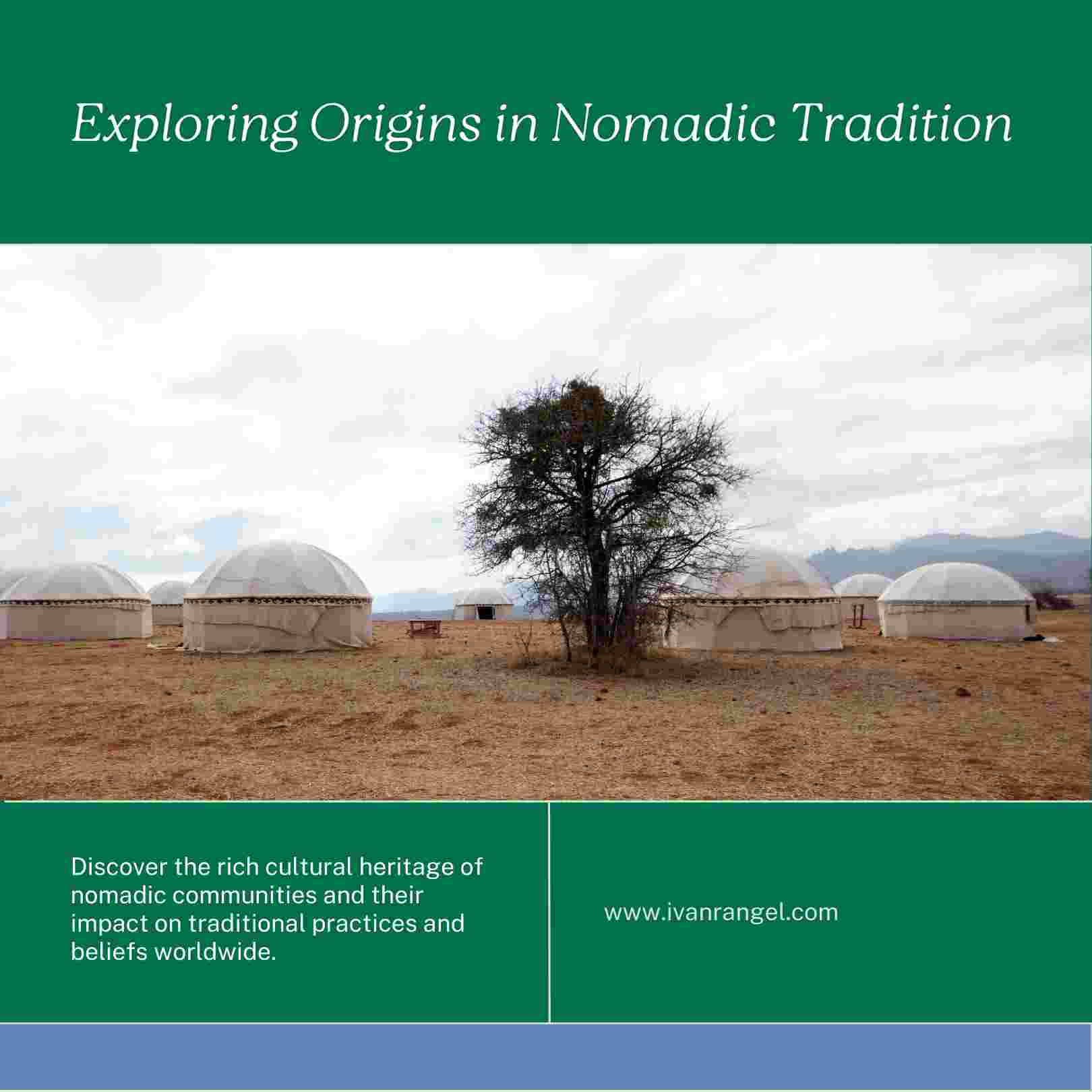
Origins in Nomadic Tradition
Embark on our culinary journey by stepping into the ancient world of the Mayan Indians, skilled nomadic hunters, and gatherers who laid the groundwork for the intricate tapestry of Mexican cuisine. Picture a landscape where the rhythms of nature dictated the menu, and the bounty of the land and sea provided the building blocks for the region’s culinary identity.
The Mayan Indians, known for their nomadic lifestyle, crafted a unique culinary legacy deeply intertwined with their surroundings. At the heart of their daily sustenance were corn tortillas, a versatile and enduring staple. These tortillas, skillfully made from freshly harvested corn, formed the canvas for a myriad of flavors that would later define Mexican cuisine.
But the Mayan culinary palette was not confined to tortillas alone. They ingeniously combined these with bean paste, creating a nourishing and filling dish that sustained them on their journeys. The union of corn and beans not only provided essential nutrients but also showcased the resourcefulness of a people deeply connected to the land.
Beyond the plant-based core of their diet, the Mayans embraced the abundance of the wild. Imagine the sizzle of fresh catch over an open fire or the savory aroma of wild game roasting to perfection. Fish, gathered from the nearby seas, added a delicate and aquatic dimension to their meals. Tropical fruits, plucked from the lush surroundings, infused bursts of sweetness into their daily fare, creating a culinary symphony that resonated with the diverse flavors of the region.
In essence, this nomadic Mayan tableau was a harmonious blend of corn, beans, wild game, tropical fruits, and fish. Each ingredient spoke of the land’s generosity, and every meal was a celebration of the rich biodiversity that surrounded these nomadic communities. As we delve into the roots of Mexican cuisine, let’s honor the Mayan legacy, where every bite tells a story of resourcefulness, connection to nature, and the artistry of culinary innovation.
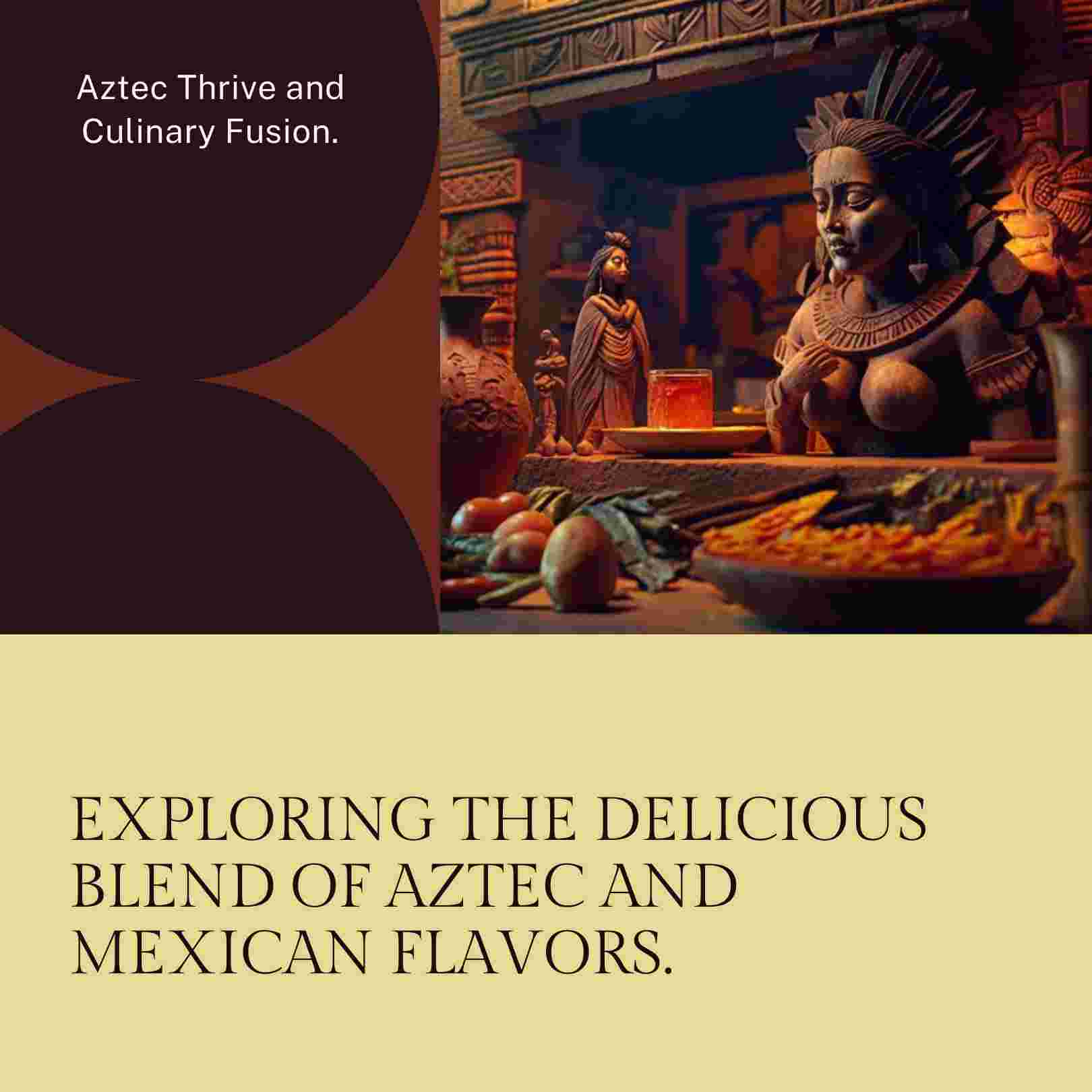
Aztec Thrive and Culinary Fusion
In the resplendent tapestry of Mexican culinary history, our journey takes us to the mid-1300s, a time when the Aztec Empire flourished with unparalleled grandeur. Picture the bustling markets, the aromas that danced through the air, and the vibrant colors of spices and ingredients that adorned every corner.
Transition to the Flourishing Aztec Empire
As we transition to this era, we find ourselves amidst the pinnacle of the Aztec civilization. The once nomadic and fragmented communities now unified under the Aztec rule, creating an empire that thrived not only in power but also in culinary sophistication.
Discovering Culinary Alchemy
Here, in the heart of the empire, culinary artistry reached new heights. The Aztecs, with a keen understanding of their bountiful land, introduced a myriad of flavors that would shape the essence of Mexican cuisine. Chili peppers, with their fiery kick, honey for natural sweetness, salt to enhance flavors, and the divine luxury of chocolate—each element intricately woven into the fabric of Aztec cooking.
Domestication of Once-Wild Game
The Aztecs not only cultivated the land but also tamed the wilderness. Once-wild game, including turkey and duck, underwent a remarkable transformation from untamed creatures to domesticated delicacies. These birds, once symbols of the untamed wilderness, became integral to the Aztec culinary repertoire.
In the bustling kitchens of the Aztec Empire, culinary fusion wasn’t just a necessity, it was an art form. The integration of new ingredients and the refinement of traditional ones marked a pivotal moment in the evolution of Mexican cuisine. The Aztecs, with their sophisticated palate and culinary ingenuity, laid the foundation for a legacy that would resonate through the centuries.
As we traverse this vibrant epoch, envision the markets brimming with life, the sizzle of chili-infused dishes, and the aroma of chocolate permeating the air. It’s a glimpse into the thriving Aztec Empire, where culinary fusion wasn’t just a practice—it was a celebration of flavors, a symphony that echoed through time.
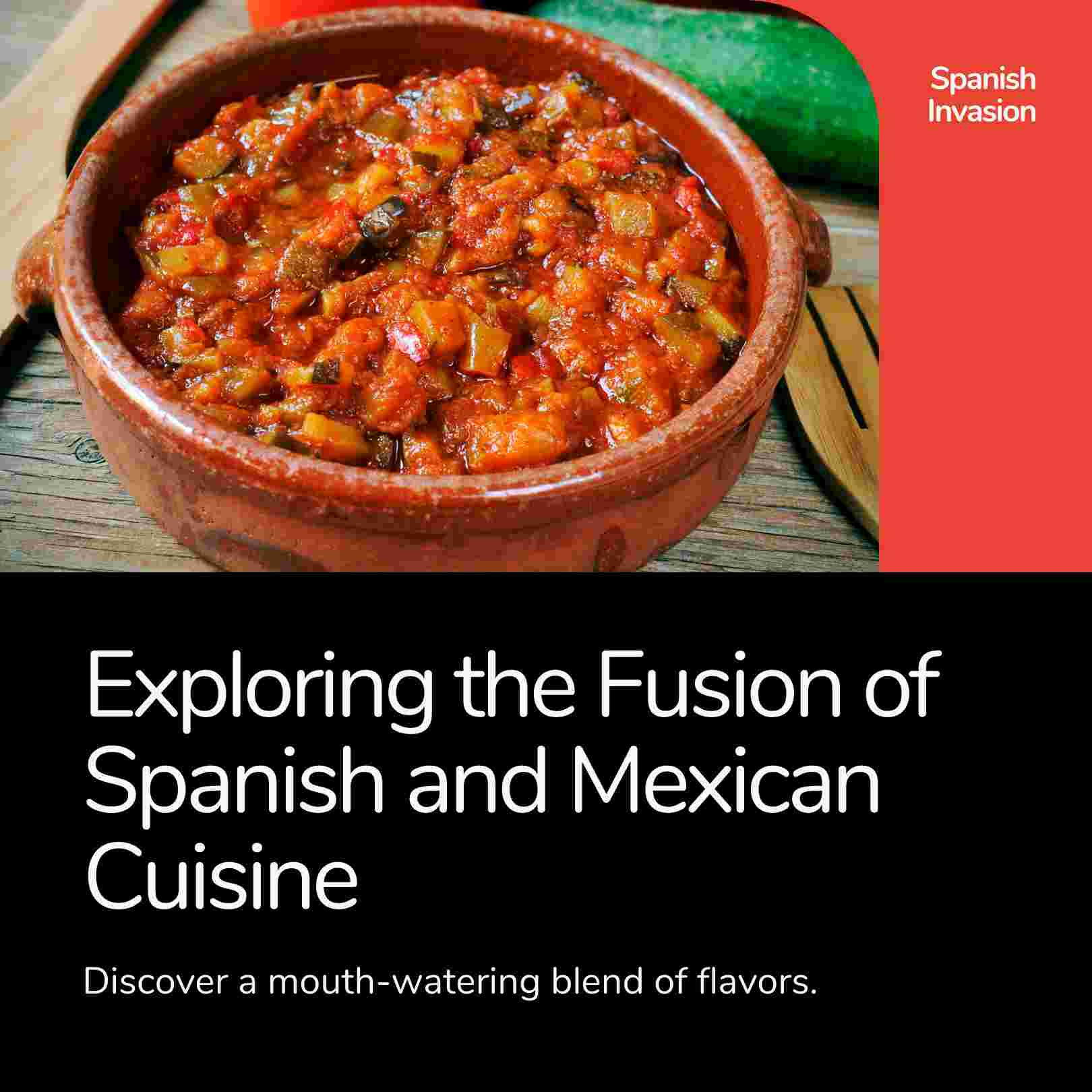
Spanish Invasion and Culinary Blend
In the annals of Mexican culinary history, the year 1521 marks a seismic shift with the arrival of the Spanish conquistadors. The impact of Spain’s invasion on Mexican cuisine transcends conquest, it’s a profound chapter in the evolution of flavors and culinary traditions.
Transformative Impact
The Spanish invasion introduced an array of ingredients that would forever alter the Mexican gastronomic landscape. Picture the verdant hillsides dotted with new arrivals—sheep, pigs, and cows grazing on unfamiliar terrain. These livestock not only enriched the Mexican diet but also brought forth a culinary revolution. The Spanish introduced dairy products, offering a delightful contrast to the indigenous culinary repertoire. As the soil embraced these novel influences, Mexican cuisine underwent a metamorphosis.
Spanish-Influenced Ingredients
Dive into the treasure trove of Spanish-influenced ingredients that became integral to Mexican kitchens. From the rustic charm of garlic to the aromatic allure of herbs, the infusion of wheat and an exotic array of spices, each element left an indelible mark. The culinary canvas expanded, presenting chefs and home cooks alike with a palette of possibilities that would shape the distinctive flavors of Mexico.
Assimilation of Global Cuisines
The story doesn’t end with Spain. Picture the bustling markets of 16th-century Mexico, where ingredients from the Caribbean, South America, France, West Africa, and Portugal converged in a culinary crossroads. The assimilation of these diverse influences was not a collision but a harmonious blend, where each flavor found its place in the rich mosaic of Mexican cuisine. The Caribbean contributed a tropical sweetness, South America brought forth a spectrum of peppers, France added a touch of sophistication, West Africa infused bold spices, and Portugal bestowed its maritime charm. Together, these global flavors converged, birthing a culinary landscape that reflected the vibrant tapestry of Mexico’s cultural history.
Resulting in Mexico’s Diverse Culinary Landscape
As the Spanish, along with a symphony of global influences, shaped Mexico’s culinary narrative, a diverse and dynamic landscape emerged. Regional variations celebrated the unique fusion of ingredients, techniques, and cultural nuances. The markets buzzed with the vibrancy of diversity, showcasing the resilience and adaptability of a cuisine that gracefully embraced change.
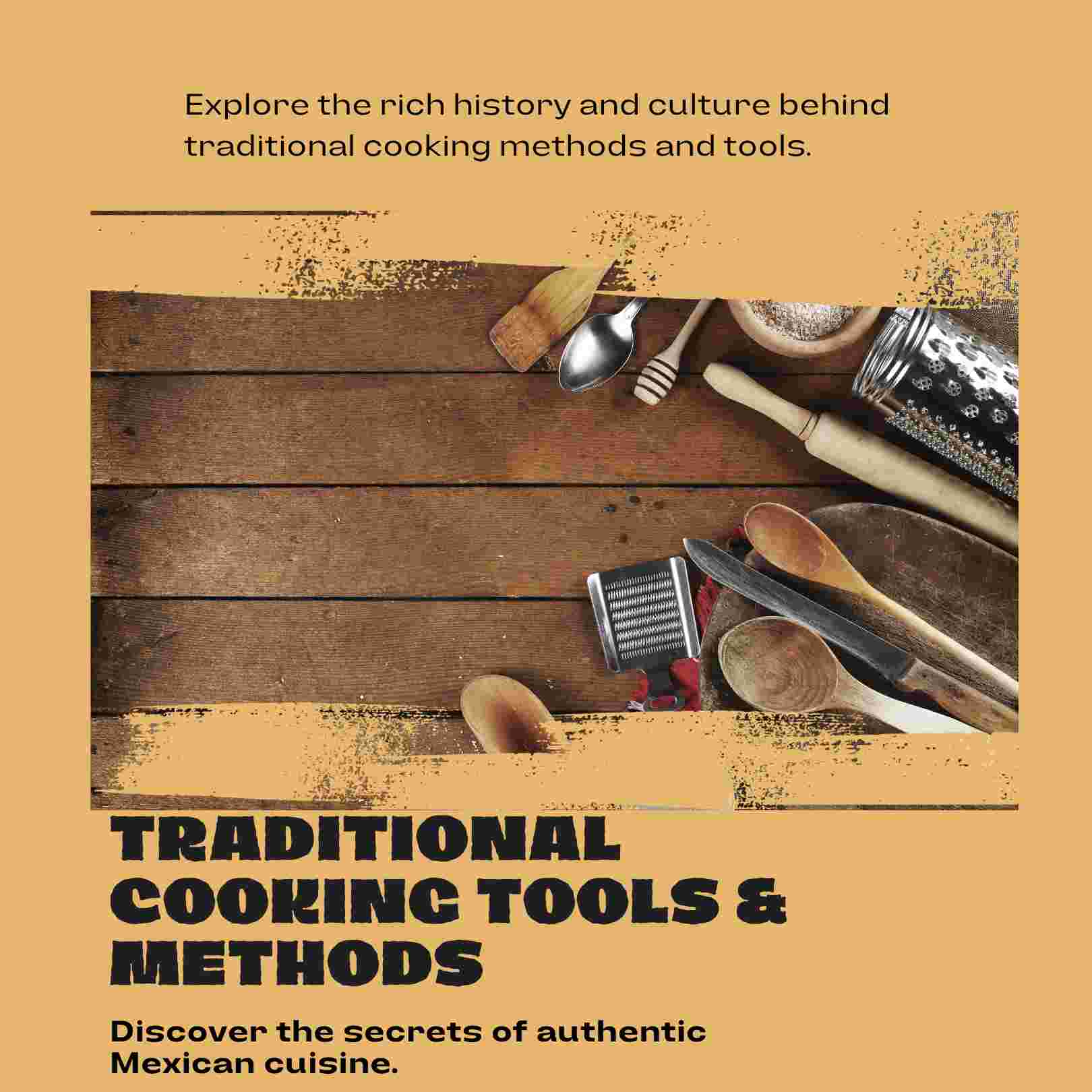
Traditional Cooking Methods and Tools
Step into the culinary arena of early Mexico, where the art of cooking was a dance with the elements, a symphony of flavors conducted over open fires and embraced with hands adorned by ancestral wisdom.
1 Open-Fire Mastery
Picture the ancient natives skillfully orchestrating their meals over open flames. Cast iron skillets, a stalwart companion in the culinary journey, held the secrets of sizzling delights. Each crackle, each hiss, spoke of a connection to the earth and the mastery of open-fire heating—a primitive yet profound technique that birthed the soul of Mexican cuisine.
2 Steaming Rituals with Nature’s Embrace
In the heart of the ancient kitchen, steaming wasn’t merely a cooking method, it was a ritual. Imagine meat, swathed in cactus or banana leaves, suspended over boiling water in deep pits. The steam, infused with the essence of natural materials, delicately coaxed flavors from the ingredients, creating dishes that resonated with the very spirit of the land.
3 The Sizzle of Frying Pans
Frying, an art form in itself, danced into the hearts of early Mexican cooks. The sizzle of ingredients meeting hot oil, a celebration of simplicity and mastery, permeated the air. Whether it was the crispiness of tortillas or the golden perfection of empanadas, the frying pan was a vessel of transformation, turning humble ingredients into culinary poetry.
4 Crafting with Metate y Mano
Enter the sacred space of meal preparation with the metate y mano—a large tool crafted from lava rock or stone. Here, the dance of grinding and smashing ingredients unfolded. This ancient duo wasn’t just tools, they were the heartbeat of the kitchen, transforming corn into masa, spices into vibrant pastes, and seeds into the essence of flavor. The metate y mano, a testament to the craftsmanship embedded in every meal.
5 Molcajete Magic
In the symphony of Mexican cuisine, the molcajete emerged as a virtuoso. A small bowl-shaped container made of stone, pottery, hard wood, or marble, and wielded with a pestle akin to a baseball bat, the molcajete was a vessel of alchemy. Grains, herbs, and spices met their destiny within its confines, creating blends that echoed the essence of tradition and the hands that shaped it.
As we step into the kitchen of the past, these traditional cooking methods and tools aren’t just relics, they are the guardians of flavor, the conduits of history, and the silent storytellers of an age when cooking was an intimate dialogue between the cook and the elements. Each tool, each technique, a brushstroke in the culinary masterpiece that is Mexican cuisine.
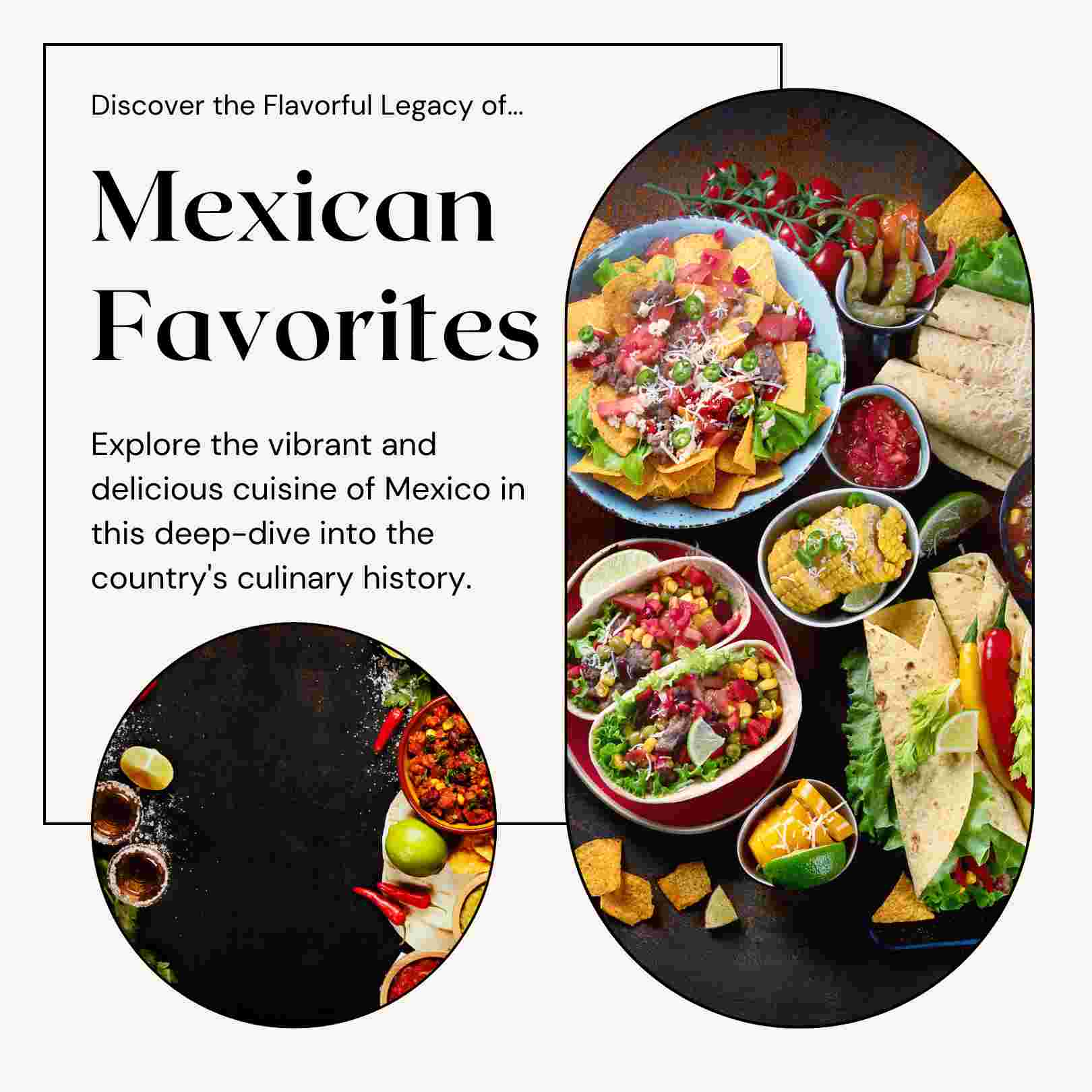
Flavorful Legacy of Mexican Favorites
1 Salsa, An Aztec Symphony of Flavors
Let’s journey back to the bustling Aztec marketplaces, where the foundations of salsa were laid. Picture vibrant displays of tomatoes, tomatillos, chipotle, and the creamy allure of avocados. It was here, amidst the hustle and bustle, that salsa, the Spanish word for sauce, found its roots. The Aztecs, culinary visionaries, crafted a symphony of uncooked, sometimes pureed sauces, using these core ingredients. Fast forward to today, and salsa remains a cornerstone of Mexican cuisine, a testament to the timelessness of its flavors.
2 Chocolate, The Aztec Gift to Europe
In 1657, a sweet revolution swept through Europe, courtesy of the Aztecs. Their gift? Chocolate. Acknowledge the Aztecs’ invaluable contribution to the introduction of chocolate to European palates. Imagine the delight as the Spaniards, influenced by the rich Aztec tradition, brought this decadent delight across the seas. The journey of chocolate from the Aztec markets to European royalty is a testament to the enduring impact of Mexican flavors on global tastes.
3 Tamales and Enchiladas, Timeless Culinary Tales
Tamales, a culinary treasure with roots tracing back to pre-Columbian times, found their way onto the tables of the Aztecs. Friar Bernardino de Sahagun documented the Spaniards being served tamales by the Aztecs in the 1550s. Picture the scene, steam rising from corn husks filled with masa and various savory or sweet fillings, a culinary artistry passed down through generations.
The word “enchilada,” meaning “in chile,” may have made its first US appearance in 1885, but the concept can be intricately linked to the Aztecs. Explore the historical journey of tortillas being used as wraps, enveloping flavorful fillings and bathed in rich chili sauces. Every bite of an enchilada whispers tales of Aztec ingenuity, a culinary heritage still alive and thriving in Mexican kitchens today.
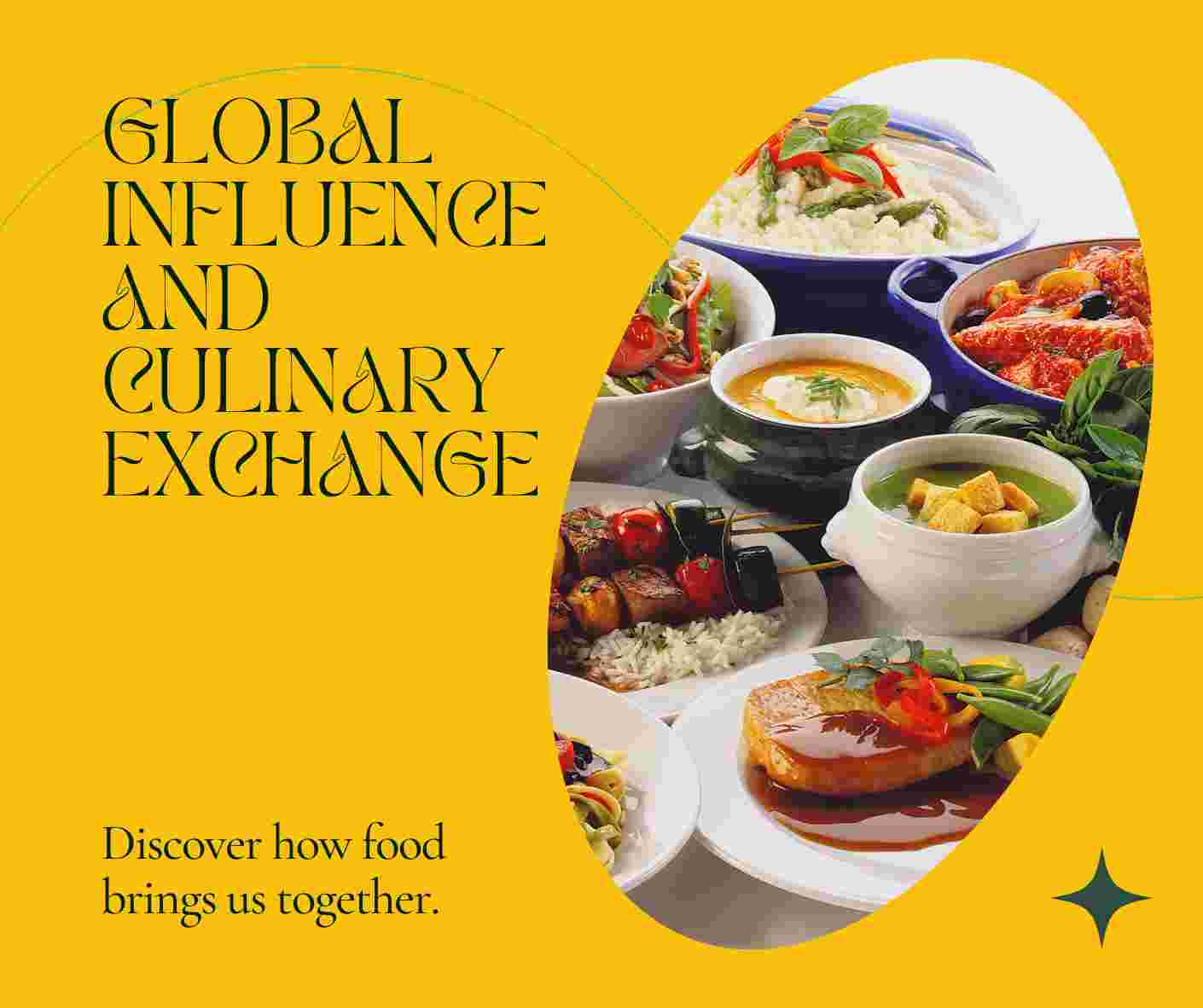
Global Influence and Culinary Exchange
1 The Spice of Discovery, Chili Peppers and Portuguese Exploration
Let’s embark on a journey that transcends borders, driven by the fiery allure of chili peppers. The Portuguese, catalysts of spice exploration, played a pivotal role in introducing chili peppers to the global stage. As early as 1542, a German herbalist, Leonhart Fuchs, documented and illustrated various types of peppers. However, it wasn’t until the late 15th century, with Columbus’s groundbreaking expeditions, that peppers found their way into European kitchens. Archaeological evidence suggests that peppers were already in use since 5000 BC, yet it was the collision of Old and New Worlds that truly ignited the world’s love affair with this spice.
2 A Culinary Ripple Effect, Mexican Cuisine Goes Global
The exchange wasn’t a one-way street. Mexican cuisine, with its rich tapestry of flavors and techniques, embarked on its own global journey. The impact of Mexican culinary traditions reverberates across menus worldwide, influencing and inspiring chefs in every corner of the globe. The quintessential flavors of Mexico have found a home in kitchens far beyond its borders, enriching the culinary landscape with the bold, spicy, and soulful essence that defines Mexican cooking.
3 Beyond Borders, A Culinary Fusion of Cultures
Mexican cuisine’s global influence isn’t just about ingredients, it’s a cultural exchange on a plate. The flavors of Mexico, once confined to its geographical borders, now dance with other culinary traditions. In every culture, you can find a hint of Mexico — whether it’s the subtle heat of chili peppers, the earthy richness of cacao, or the comforting embrace of tortillas. This reciprocal exchange of culinary ideas enriches the global palate, creating a harmonious fusion that transcends cultural boundaries.
4 A Universal Tapestry, The Legacy Continues
As we explore the global influence and culinary exchange of Mexican cuisine, it’s clear that the legacy of this culinary marvel continues to evolve. What started as a collision of worlds has blossomed into a universal tapestry, woven with the threads of flavors, traditions, and shared culinary experiences. Whether it’s a taco stand in Tokyo, a salsa-infused dish in Paris, or a chili-spiced creation in New York, the global impact of Mexican cuisine endures, proving that good food truly knows no borders.
Conclusion: A Tapestry Woven in Time, Flavor, and Tradition
As our culinary expedition draws to a close, let’s linger a moment longer to fully savor the intricate tapestry of Mexican cuisine. It’s not merely a collection of dishes, it’s a symphony of diverse flavors, a reflection of deep-rooted cultural significance, and a living testament to centuries-old traditions that continue to thrive.
In every bite, we taste the essence of resilience, adaptation, and the unwavering spirit of a people who have passionately crafted their culinary identity. The global resonance of Mexican cuisine isn’t just a result of its delightful flavors but a manifestation of its rich history, a journey that spans the epochs, embracing influences from across the globe.
From the nomadic wanderings of the Mayan Indians to the flourishing Aztec Empire, the Spanish invasion’s transformative impact to the melding of diverse culinary influences, each chapter in Mexico’s culinary story is etched with tales of innovation and cultural exchange.
As we bid farewell to this culinary exploration, consider not just the dishes on your plate but the stories they tell. The tamale, once served by Aztecs to Spaniards, the salsa echoing through ancient marketplaces, and the global journey of chili peppers—these are more than ingredients, they are threads that connect us to a shared history.
The global impact of Mexican cuisine is not just gastronomic, it’s a warm invitation to every corner of the world to partake in a communal celebration. It transcends borders, languages, and cultural divides, embodying a universal language spoken through the joy of shared meals.
So, let’s not merely conclude our culinary journey but carry forward the spirit of Mexico’s culinary legacy. As we step away from this virtual table, may the flavors linger, the stories resonate, and the warmth of Mexican cuisine continue to bring people together, creating a tapestry that spans continents and unites us all in the joy of good food and shared heritage. ¡Buen provecho y hasta luego!
- Mar 20, 2024
Native Mexican Animals: Fascinating Wildlife of Mexico
Fascinating Wildlife of Mexico: Native Mexican AnimalsWelcome to the top notch international of Mexico's natural world! Mexico is a place
- Mar 14, 2024
Safeway Money Order: Best Locations to Get a Money Order
Find out how easy and safe it's miles to ship cash with Safeway Money Orders. This manual suggests where to
- Mar 08, 2024
The Stock Market Plumbing To Buy In 2024
In the complicated world of investing, the stock market plumbing sounds like a strange term. But it is an apt
- Feb 24, 2024
Beyond Finance Legit: Navigating with Confidence
Beyond Finance Legit: Unraveling the Legitimacy of Financial Service Providers in Today's Complex Landscape In modern-day complicated monetary panorama, it
- Feb 21, 2024
The Fundamentals of Corporate Finance
Unveiling the Core Tenets: Exploring 'The Fundamentals of Corporate Finance' When we talk about the fundamentals of corporate finance, we're






cialis interactions
January 2, 2024cialis interactions
cialis interactions